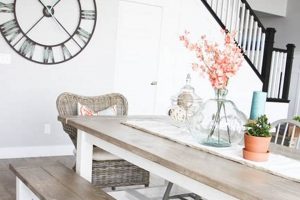The construction of customized habitats for chelonians, specifically land tortoises, represents a popular approach among reptile enthusiasts. These enclosures, often built at home, aim to replicate the natural environment of the animal, offering appropriate space, temperature gradients, and substrate for optimal health and well-being. For example, a basic structure might consist of a large, open-topped box constructed from wood or plastic, filled with a mixture of soil, sand, and coco coir to facilitate burrowing and foraging behaviors.
Providing a tailored environment for a tortoise is crucial for its physical and psychological health. A well-designed habitat can promote natural behaviors, reduce stress, and prevent common health problems associated with inadequate living conditions. Historically, enclosures were often limited in size and complexity, failing to meet the specific needs of the species. The increased awareness of proper reptile husbandry, coupled with readily available materials, has led to a rise in creating customized, enriching environments.
The subsequent sections will explore considerations for size and material selection, proper heating and lighting implementation, substrate choices, and enrichment strategies, all essential aspects of creating a suitable and functional dwelling. It will further delve into construction techniques and safety precautions necessary for the design and assembly of appropriate enclosures.
Essential Considerations for Tortoise Enclosure Construction
The following recommendations provide guidance for creating a secure and appropriate habitat, supporting the health and well-being of the tortoise.
Tip 1: Size Matters: Ensure adequate space for the tortoise to roam and explore. A minimum of four times the tortoise’s length and two times its width is a general starting point; however, larger areas are always preferable.
Tip 2: Material Selection: Opt for non-toxic, durable materials that can withstand moisture and temperature fluctuations. Untreated wood, sturdy plastics, or sealed containers are commonly used. Avoid pressure-treated wood due to its chemical content.
Tip 3: Temperature Gradient: Implement a proper heating system to create a thermal gradient. A basking spot should reach the optimal temperature for the species, while the cooler end of the enclosure should remain significantly cooler, allowing the tortoise to regulate its body temperature.
Tip 4: Substrate Depth: Provide a substrate layer deep enough for the tortoise to burrow and dig. A mixture of soil, sand, and coco coir is often recommended, allowing for both moisture retention and proper drainage.
Tip 5: Secure Enclosure: The enclosure must be escape-proof. Tortoises are surprisingly adept at climbing and digging. Secure walls and, if necessary, a mesh top should be implemented to prevent escapes and protect the tortoise from predators.
Tip 6: UV Lighting is Critical: UVB and UVA lighting are essential for Vitamin D3 synthesis and proper calcium absorption. Ensure the lighting is appropriately positioned and replaced according to the manufacturer’s recommendations.
Tip 7: Enrichment: Incorporate naturalistic elements such as rocks, logs, and plants to provide enrichment and encourage natural behaviors. Ensure all items are non-toxic and safe for the tortoise.
Creating a functional habitat involves careful consideration of material selection, dimensions, temperature regulation, and the species-specific needs of the tortoise. By adhering to these recommendations, a suitable living environment that promotes both physical and mental health can be achieved.
The subsequent section will address advanced construction methods and long-term maintenance strategies, ensuring a consistently healthy and stimulating environment for the tortoise.
1. Adequate dimensions
The concept of adequate dimensions is intrinsically linked to the successful creation of a habitat. The physical size of the enclosure directly impacts the tortoise’s ability to exhibit natural behaviors, such as foraging, exploring, and thermoregulation. A dwelling that is too small restricts movement and can lead to stress, reduced activity levels, and potentially, health complications such as shell deformities. The specifications of the enclosure should correlate with the adult size of the tortoise species in question. For example, a Hermann’s tortoise, reaching a manageable size, would still require a table significantly larger than one intended for a smaller species like a Russian tortoise, reflecting their respective needs for terrestrial exploration.
Designing and constructing a custom habitat allows for the exact tailoring of dimensions. This contrasts with pre-fabricated commercial enclosures, which often fall short of providing sufficient space, especially for larger tortoise species or when housing multiple individuals. A custom design offers the opportunity to create distinct zones within the enclosure, such as a basking area, a shaded retreat, and a dedicated feeding station, promoting a diverse and stimulating environment. Calculating the floor area based on the mature size of the tortoise, with consideration for future growth, is critical. For instance, creating an enclosure that is at least 4 times the tortoise’s length and 2 times its width will provide a minimum standard of space, but more area is typically preferred.
In conclusion, the correlation between habitat dimensions and tortoise welfare cannot be overstated. The capacity to precisely control these dimensions is a primary advantage. Proper planning, with careful consideration given to the species-specific requirements for space and environmental complexity, is essential to creating a beneficial dwelling. Failing to provide adequate dimensions can negate other well-intentioned efforts toward proper care. A balance must be achieved between available resources and creating an environment that best suits the tortoise’s natural needs, fostering a healthy and fulfilling life.
2. Secure enclosure
The security of a tortoise habitat is a fundamental aspect of its design and construction, directly influencing the animal’s well-being and preventing potential hazards. When constructing a “diy tortoise table,” implementing measures to ensure a secure environment is paramount for both the tortoise’s safety and the owner’s peace of mind.
- Preventing Escape
Escape prevention is a primary concern. Tortoises, despite their perceived slowness, are adept climbers and diggers. A “diy tortoise table” must incorporate walls of sufficient height and smooth surfaces to deter climbing. Furthermore, burying the walls slightly into the substrate or adding an inward-facing lip can hinder digging attempts. Example: A smooth-sided enclosure constructed from wood or plastic, with walls at least twice the tortoise’s height, is a standard approach.
- Predator Protection
Outdoor enclosures, or indoor enclosures accessible to other pets, necessitate protection from predators. A secure lid, constructed from strong wire mesh or solid material, prevents access from birds, cats, dogs, or other potential threats. The mesh size should be small enough to prevent predators from reaching through and harming the tortoise. Example: A wire mesh lid with openings no larger than one inch, securely fastened to the frame of the table, can provide adequate protection.
- Material Integrity and Durability
The materials used in constructing the “diy tortoise table” must be durable and non-toxic. Weak or easily damaged materials can compromise the enclosure’s security, allowing for escape or creating hazards for the tortoise. Non-toxic materials prevent accidental ingestion of harmful substances. Example: Using untreated wood or durable, food-grade plastic for the enclosure walls ensures both strength and safety.
- Avoiding Entrapment Hazards
The design of the “diy tortoise table” should eliminate potential entrapment hazards. Narrow gaps or crevices where a tortoise could become stuck should be avoided. Heavy objects, such as rocks or logs, should be securely placed to prevent them from shifting and potentially trapping or injuring the tortoise. Example: Ensuring that all rocks and decorations are stable and that there are no gaps between the wall and the substrate prevents entrapment.
These facets of enclosure security are integral to the “diy tortoise table” concept. Implementing these measures during construction ensures a safe and secure environment, allowing the tortoise to thrive without the risk of escape, predation, injury, or exposure to harmful substances. A well-secured habitat is a cornerstone of responsible tortoise ownership, directly contributing to the animal’s health and longevity.
3. Proper ventilation
The construction of a “diy tortoise table” must prioritize adequate air exchange to maintain a healthy environment for the inhabitant. Proper ventilation mitigates the accumulation of harmful gases, regulates humidity levels, and prevents the growth of mold and bacteria, all of which can negatively impact the tortoise’s respiratory system and overall well-being. Inadequate ventilation, conversely, can lead to respiratory infections, shell rot, and other health problems. For instance, a fully enclosed table with limited airflow is prone to excessive humidity buildup, creating an environment conducive to bacterial and fungal growth. This, in turn, can compromise the tortoise’s immune system and increase its susceptibility to disease.
The design of a “diy tortoise table” should incorporate strategic ventilation openings. These openings should be positioned to promote cross-ventilation without creating drafts directly impacting the tortoise. A common approach involves placing vents on opposite sides of the enclosure, allowing for natural air circulation. The size and number of vents should be adjusted based on the size of the enclosure, the species of tortoise, and the ambient humidity levels. For example, a larger enclosure housing a species susceptible to respiratory issues may require more extensive ventilation than a smaller enclosure housing a more tolerant species. Furthermore, the substrate used within the table can influence ventilation requirements. Substrates that retain moisture, such as coco coir, may necessitate increased ventilation to prevent excessive humidity. Regular monitoring of humidity levels within the enclosure is crucial to ensure that the ventilation system is functioning effectively.
In summary, proper ventilation is a non-negotiable aspect of “diy tortoise table” construction. It is intrinsically linked to the creation of a healthy and sustainable environment for the tortoise. The absence of adequate air exchange can lead to a cascade of negative health consequences. A well-designed and ventilated enclosure, on the other hand, contributes significantly to the tortoise’s overall well-being. The challenges associated with achieving optimal ventilation can be mitigated through careful planning, strategic vent placement, and ongoing monitoring of environmental conditions. The implementation of these practices is paramount to responsible tortoise care.
4. Thermal gradient
A thermal gradient, or the variation in temperature across a given space, is an essential component of a functional enclosure. The absence of this gradient can lead to severe health problems and a reduced lifespan. The creation of a thermal gradient within a “diy tortoise table” directly addresses the physiological needs of ectothermic reptiles. Tortoises rely on external heat sources to regulate their internal body temperature. A properly established thermal gradient allows the tortoise to behaviorally thermoregulate, moving between warmer and cooler zones within the enclosure to achieve their optimal body temperature for digestion, immune function, and overall metabolism. For example, without a basking spot reaching the appropriate temperature for the species (e.g., 95-100F for many Mediterranean tortoises), the tortoise cannot effectively digest food, potentially leading to impaction or malnutrition.
The implementation of a thermal gradient within a “diy tortoise table” necessitates careful planning and execution. A typical setup includes a basking area, achieved through the use of a heat lamp or ceramic heat emitter, positioned at one end of the enclosure. The opposite end should remain significantly cooler, providing a retreat from the heat. The temperature difference between the basking spot and the cool end should be substantial enough to allow the tortoise to effectively regulate its body temperature. Monitoring the temperatures in both zones is crucial; digital thermometers or infrared temperature guns provide accurate readings. Furthermore, the substrate composition and depth can influence the thermal gradient. A deeper substrate layer at the cooler end can help retain moisture and maintain a lower temperature, while a thinner layer at the basking spot allows for more efficient heat absorption. Incorrect placement or wattage of heat sources, or inadequate ventilation, can disrupt the gradient, creating an environment that is either too hot or too cold throughout.
In summary, the integration of a thermal gradient is a critical aspect of “diy tortoise table” design. It directly affects the tortoise’s ability to thermoregulate, influencing digestion, immune function, and overall health. Challenges in achieving and maintaining a proper gradient can be addressed through careful planning, accurate temperature monitoring, and appropriate equipment selection. A failure to provide an adequate thermal gradient can negate other well-intentioned efforts to create a suitable environment, highlighting the significance of this element in responsible tortoise care. A well-established thermal gradient is a cornerstone of a thriving chelonian habitat.
5. UVB Lighting
Ultraviolet B (UVB) radiation plays a vital role in the health and well-being of tortoises housed in artificial environments, directly influencing their ability to synthesize vitamin D3. When creating a “diy tortoise table,” the proper implementation of UVB lighting is not merely a supplementary consideration but a fundamental necessity for ensuring the animal’s long-term survival and preventing debilitating diseases.
- Vitamin D3 Synthesis
UVB radiation, specifically wavelengths between 290-315 nanometers, initiates the photochemical conversion of 7-dehydrocholesterol in the tortoise’s skin to previtamin D3, which is then isomerized to vitamin D3. Vitamin D3 is essential for the absorption of calcium from the diet, facilitating bone growth, shell development, and overall skeletal integrity. Without adequate UVB exposure, tortoises are prone to metabolic bone disease (MBD), a condition characterized by weakened bones, shell deformities, and eventual death. Example: A tortoise housed in a “diy tortoise table” without UVB lighting, consuming a calcium-rich diet, will still develop MBD because it cannot effectively utilize the calcium without vitamin D3 synthesis triggered by UVB.
- Wavelength and Intensity
The intensity and spectral distribution of UVB lighting are critical. Commercially available UVB bulbs vary in their output, and it is essential to select a bulb that emits the appropriate UVB intensity for the specific tortoise species and its distance from the light source. Bulbs with a UVB output of 5-10% are commonly recommended for tortoises. The distance between the bulb and the tortoise should adhere to the manufacturer’s recommendations to ensure adequate UVB exposure without causing photokeratitis or other health problems. Example: A desert tortoise housed in a “diy tortoise table” may require a higher intensity UVB bulb than a forest-dwelling tortoise due to differences in their natural UVB exposure levels.
- Bulb Replacement and Lifespan
UVB bulbs degrade over time, losing their UVB output even if they continue to emit visible light. Therefore, regular replacement of UVB bulbs is crucial to maintain adequate UVB exposure. The replacement frequency varies depending on the bulb type but is generally recommended every 6-12 months. Documenting the date of installation and regularly testing the bulb’s UVB output using a UVB meter can help determine the optimal replacement schedule. Example: Replacing a UVB bulb every 6 months, regardless of its continued visible light output, ensures that the tortoise housed in the “diy tortoise table” receives adequate UVB radiation.
- Placement and Shading
The placement of the UVB bulb within the “diy tortoise table” should mimic natural sunlight exposure, providing a gradient of UVB intensity. Providing shaded areas within the enclosure allows the tortoise to thermoregulate and avoid overexposure to UVB radiation. The bulb should be positioned above the tortoise, as UVB radiation cannot effectively penetrate glass or plastic. Example: Positioning the UVB bulb over a basking area in the “diy tortoise table” allows the tortoise to bask and absorb UVB radiation while also providing shaded areas for retreat when necessary.
The facets described are interdependent and critical to the well-being of the tortoise. Failure to adequately address the nuances of UVB lighting within a “diy tortoise table” environment can result in significant health issues. A tortoise keeper must understand and adapt to the proper requirements.
6. Substrate choice
Substrate choice constitutes a critical decision in the construction and maintenance of a “diy tortoise table.” The substrate directly impacts several key aspects of the tortoise’s environment, including humidity levels, burrowing behavior, hygiene, and thermal properties. An inappropriate substrate can lead to a range of health problems, while a well-chosen substrate contributes significantly to the animal’s overall well-being. The type of substrate used can influence the tortoise’s ability to thermoregulate, maintain proper hydration, and avoid infections. For example, using a substrate that is too dry can lead to dehydration and respiratory issues, while a substrate that is consistently damp can promote the growth of bacteria and fungi, leading to shell rot or skin infections. The specific substrate requirements vary depending on the tortoise species; desert tortoises require drier substrates than tropical or Mediterranean species.
The practical application of this understanding is evident in the variety of substrate options available and the need for informed selection. Common substrate choices for “diy tortoise tables” include soil, sand, coco coir, cypress mulch, and various commercially available reptile substrates. Each option possesses unique properties. Soil and sand mixtures, for instance, are often used to mimic the natural environment of many tortoise species, providing opportunities for digging and burrowing. Coco coir retains moisture well, contributing to appropriate humidity levels, but can become overly damp if not properly managed. Cypress mulch also retains moisture but can be dusty and may harbor mites. The choice must consider the tortoise species’ origin and habitat, as well as the owner’s ability to maintain the chosen substrate. Regular spot cleaning and periodic complete substrate changes are necessary to maintain hygiene and prevent the buildup of harmful bacteria. The depth of the substrate layer is also important, as it affects burrowing ability and temperature regulation. A substrate layer that is too shallow may not allow the tortoise to burrow, while a layer that is too deep can make it difficult to monitor and clean.
In summary, the selection of an appropriate substrate is a crucial aspect of responsible tortoise care within a “diy tortoise table” setup. Its role extends beyond mere aesthetics, directly influencing the tortoise’s health and behavior. Challenges in selecting the optimal substrate include balancing moisture levels, promoting hygiene, and catering to species-specific needs. Careful consideration of the substrate’s properties, combined with consistent monitoring and maintenance, is essential to creating a thriving environment. The substrate is therefore an active component of habitat management, rather than a passive element of the enclosure.
7. Enrichment elements
The integration of enrichment elements within a “diy tortoise table” environment extends beyond mere aesthetic considerations. It directly addresses the psychological and behavioral needs of the tortoise, promoting activity, reducing stress, and stimulating natural behaviors. The absence of environmental enrichment can lead to boredom, inactivity, and the development of abnormal behaviors, negatively impacting the tortoise’s overall welfare.
- Varied Terrain and Substrate
Providing a variety of terrain and substrate types within the “diy tortoise table” encourages exploration and exercise. Incorporating hills, slopes, and different substrate textures (e.g., smooth rocks, rough bark, patches of grass) stimulates the tortoise’s sensory experience and promotes physical activity. This varied terrain encourages natural locomotion and helps maintain muscle tone and joint flexibility. Example: A “diy tortoise table” featuring a small hill constructed from packed soil and a shallow pool of water can encourage climbing and wading behaviors.
- Hiding Places and Visual Barriers
Offering multiple hiding places and visual barriers allows the tortoise to retreat and feel secure, reducing stress and promoting a sense of control over its environment. Hiding places can be created using rocks, logs, plants, or commercially available reptile hides. Visual barriers can be created by strategically placing plants or decorations to break up the line of sight, providing the tortoise with a sense of privacy. Example: A “diy tortoise table” with several cork bark hides and dense foliage provides the tortoise with ample opportunities to retreat and feel secure.
- Foraging Opportunities
Stimulating foraging behaviors is essential for preventing boredom and encouraging activity. This can be achieved by scattering food throughout the “diy tortoise table” rather than presenting it in a single bowl. Edible plants can also be incorporated into the enclosure, allowing the tortoise to graze naturally. Food puzzles and enrichment toys can further stimulate foraging behaviors. Example: Scattering edible flowers and leafy greens throughout the “diy tortoise table” encourages the tortoise to actively search for food.
- Novel Objects and Rotational Enrichment
Introducing novel objects and rotating enrichment items periodically prevents habituation and maintains the tortoise’s interest. Novel objects can include safe, non-toxic toys, rocks, or branches. Rotating enrichment items regularly provides new stimuli and prevents the tortoise from becoming bored. It’s vital these objects are safe for tortoises. Example: Introducing a new, smooth rock to the “diy tortoise table” every few weeks or rotating the position of existing decorations can stimulate the tortoise’s curiosity.
These enrichment elements demonstrate that a “diy tortoise table” is not merely a container but a dynamic environment that supports the multifaceted needs of the animal. The success of a homemade dwelling hinges on the owners continued dedication. Prioritizing these additions significantly contributes to a higher quality of life for the tortoise. Prioritizing these additions is a foundational facet of responsible tortoise care.
Frequently Asked Questions
This section addresses common inquiries regarding the construction and maintenance of enclosures, offering clarification on critical aspects of tortoise husbandry.
Question 1: What are the minimum size requirements for a homemade enclosure?
Minimum dimensions are contingent upon the species and adult size of the tortoise. A general guideline dictates a floor area at least four times the tortoise’s length and twice its width. Larger dimensions are invariably preferable to accommodate natural behaviors.
Question 2: What materials are appropriate for constructing an enclosure?
Suitable materials include untreated wood, durable plastics, and sealed containers. Avoid pressure-treated wood due to its chemical composition. Materials must be non-toxic, moisture-resistant, and capable of withstanding temperature fluctuations.
Question 3: How is an appropriate temperature gradient established?
A temperature gradient is achieved by implementing a heat source, such as a basking lamp or ceramic heat emitter, at one end of the enclosure. The opposite end should remain significantly cooler. Temperatures must be monitored and adjusted to meet the specific needs of the tortoise species.
Question 4: What type of lighting is required, and how should it be implemented?
UVB and UVA lighting are essential for vitamin D3 synthesis and calcium absorption. Bulbs must be appropriately positioned and replaced according to manufacturer recommendations. Shaded areas within the enclosure should be provided to allow the tortoise to regulate its exposure to UV radiation.
Question 5: How often should the substrate be cleaned and replaced?
Regular spot cleaning to remove waste is necessary. Complete substrate changes should be performed periodically, typically every 1-3 months, depending on the substrate type and the cleanliness of the enclosure. Maintaining a clean substrate prevents the buildup of harmful bacteria and fungi.
Question 6: What enrichment elements are suitable for a homemade enclosure?
Suitable enrichment elements include rocks, logs, plants, and hiding places. These items encourage natural behaviors such as exploration, foraging, and burrowing. The enclosure layout can be periodically rearranged to provide novel stimuli.
These frequently asked questions highlight critical considerations for the successful construction and maintenance of enclosures. Adherence to these guidelines promotes the health and well-being of the tortoise.
The subsequent section will explore advanced topics in enclosure design and management, addressing species-specific needs and long-term maintenance strategies.
Conclusion
The foregoing exploration of the “diy tortoise table” highlights its importance as a customized habitat solution for chelonian care. Elements such as size adequacy, material selection, ventilation, thermal gradients, lighting, substrate, and enrichment have been examined, underlining their interdependent roles in fostering a healthy and sustainable environment. The success of such an endeavor hinges on meticulous planning, precise execution, and a comprehensive understanding of the species-specific requirements of the inhabiting tortoise.
The creation and maintenance of a “diy tortoise table” represents a commitment to responsible animal husbandry. The long-term well-being of the tortoise is inextricably linked to the diligence and knowledge applied to its artificial habitat. Continued research and refinement of enclosure design are essential to ensuring optimal conditions, promoting longevity, and mitigating the potential for health complications. The effort invested in a well-constructed and maintained dwelling is a testament to the dedication of providing a thriving environment.


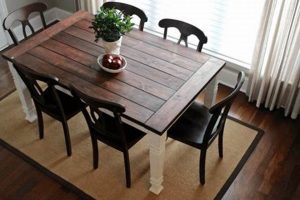
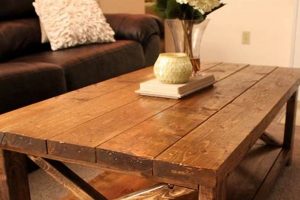
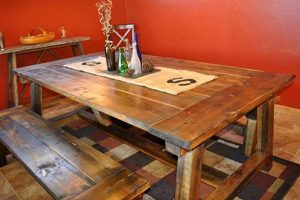
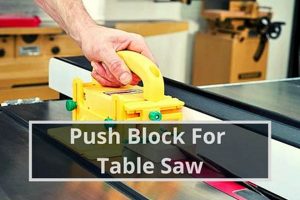
![Build a Safe DIY Table Saw Push Stick [Guide] The DIY Hub: Creative Crafts, Repairs & Life Hacks Build a Safe DIY Table Saw Push Stick [Guide] | The DIY Hub: Creative Crafts, Repairs & Life Hacks](https://craftingdiycenter.com/wp-content/uploads/2025/07/th-4323-300x200.jpg)
